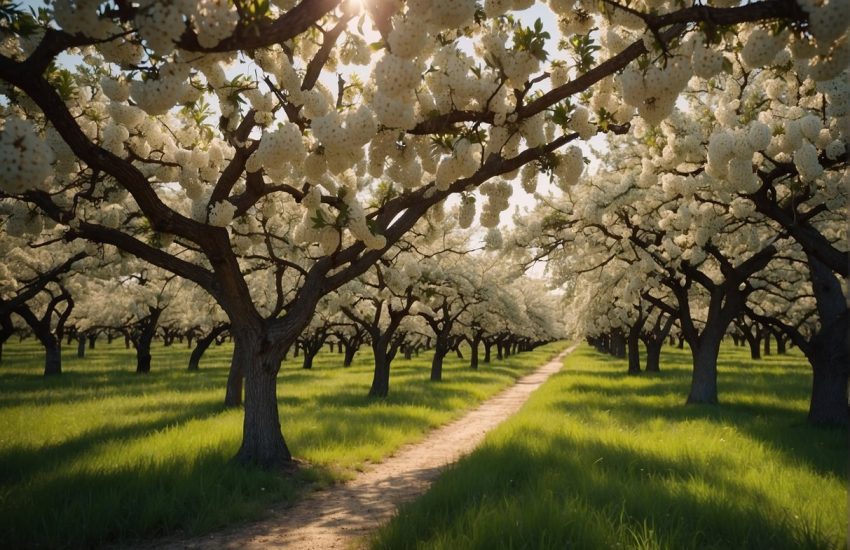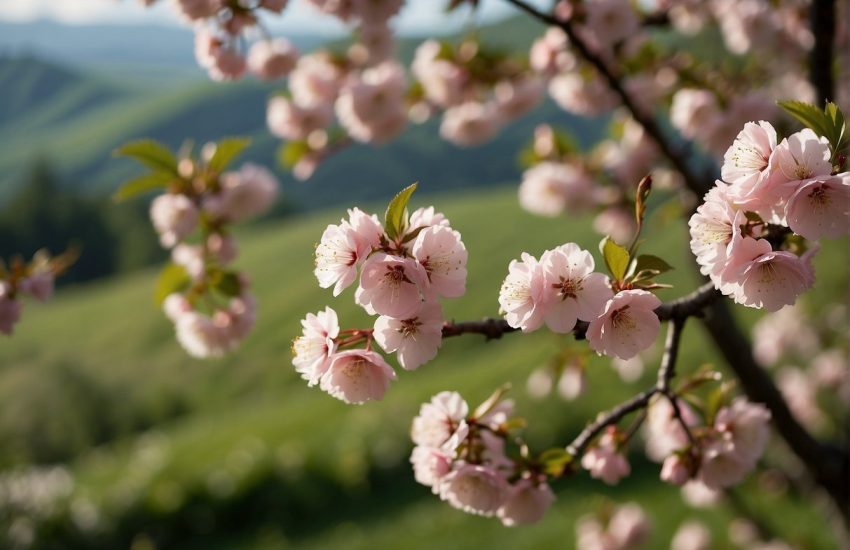Best 6 Plum Trees To Grow In Alabama
The Southeast, including Alabama and other areas, has been growing plums for several centuries.
Peaches and plums have similar requirements. Rootstocks, pruning, pest management, nutrient availability, irrigation, and harvesting are all important to plums.
The most serious problem comes from early flowering, which can cause damage to crops from late winter’s and early spring’s freezes.
Rootstocks used to propagate peaches and nectarines are often used for plums as well. The Guardian peach rootstock is preferred for plantings in old orchard sites.
Lovell peach and Halford peach are commonly used rootstocks for the southeast. South Alabama may continue to use Nemaguard peach rootstock for virgin plantings.
Several plum varieties studied in Alabama over the past 10 years have failed to deliver consistent yields. These studies and orchard experiences have left plums as a very marginal commercial crop in the Southeast due to their poor record.
4-in-1 Plum Tree

Beautiful plum trees and their mouth-watering fruit are available in several different varieties. It is tough to make a decision if space is limited to just one. Therefore, based on the best cultivars available, we have chosen four varieties from them. Consequently, you’ll be able to choose from the following varieties:
The blossoms of the 4-in-1 Plum tree burst into vibrant color in the spring, accompanied by a lush backdrop of green foliage. Flowers from these four cultivars bloom at varying intervals, depending on your region, so you can enjoy their beauty for weeks at a time. Definitely one of the most impressive trees I’ve seen.
Black Ice Plum Tree
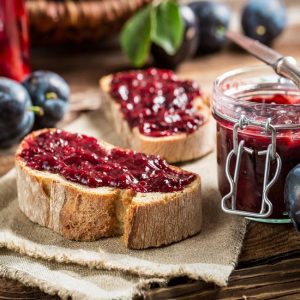
Black Ice plum trees are the California plum trees of the midwest. They can withstand low temperatures down to -30 degrees Fahrenheit.
As a result, your tree won’t freeze to death below freezing, so you’ll never have to worry about replanting when it gets cold.
A striking architectural display is created by the branches weeping over the trunk of this Lydecker plum tree.
A lush green canopy surrounds the tiny, white flowers that bloom in the spring. Your tree will be full of large plums in red, yellow, and purplish-black by the end of July.
Burgundy Plum Tree
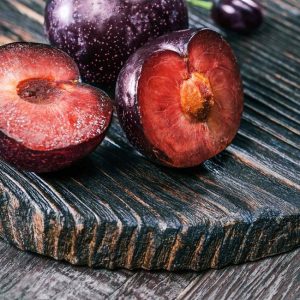
Burgundy Plum Trees offer a healthy harvest of juicy Japanese Plums with a small pit (meaning you get more fruit), making them an excellent choice for home gardens.
It is especially hardy in colder climates. Plus, you get a prolonged harvest with the Burgundy Plum. Burgundy plums promise months of fruit.
There is virtually no tart flavor in the plums made from Burgundy. Your first few seasons of growing fruit come from your own backyard, and you can compare them to supermarket fruit.
2-in-1 Plum Surprise Tree
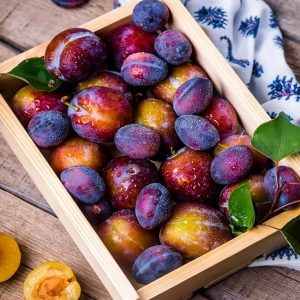
What kind of tree produces two types of juicy plums? Plum Surprise offers you two great products in one, almost too good to be true. It won’t take a lot of space for you to enjoy a big harvest every year. Your first harvest will be a sweet surprise: you won’t know which three types of plums are grafted on your tree until it produces fruit!
Additionally, you’ll get fruit right away. Two trees are grafted together, which means the top of one tree is spliced onto the rootstock of another tree. As a result, you get a mature harvest even though there is virtually no maintenance required.
Nothing to guess, nothing to bother with, nothing to fuss with. Plum thrives under most conditions and is resilient. Even though your plum tree is bred to grow in areas with colder climates, it can still survive in southern areas.
Santa Rosa Plum Tree
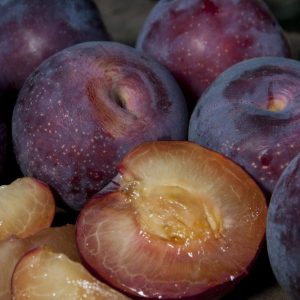
Putting a Plum Tree in your yard (Prunus ‘Santa Rosa’) will allow you to enjoy in-season plums whenever you want. In the U.S., Luther Burbank first introduced the technology into Santa Rosa, California, in 1906.
This variety of tree bears fruit all year around and offers a delicious harvest. If you can, plant one near an area where you’ll be able to enjoy both its gorgeous blossoms and its beautiful, juicy fruit.
Each spring, watch as Santa Rosa Plums with frilly white flowers tinged with pink begin to bloom in your garden. All of the neighbors will be jealous of your spectacle.
While you can still enjoy the blooms, by the end of July or the beginning of August, those gorgeous Plums will be ripe for the picking.
Howard Miracle Plum Tree
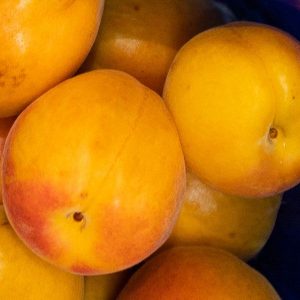
As one of the best tasting fresh-eating plums, Howard Miracle Plum Tree (Prunus salicina ‘Howard Miracle’) produces fruit with a zesty, sweet flavor. There is a floral-tropical flavor of pineapple and honey in the white flesh!
Delicious and healthy for fresh eating, this variety is a real miracle. Howard Wonder Plums are sometimes referred to as Howard Wonders. Popular at Southern California farmers’ markets, but might be hard to find.
After harvest, you can keep them for a few weeks. You won’t be disappointed with its complex, layered flavor!
You can thinly slice them and serve them along with fruit and cheese platters or in sorbets and specialty drinks. The recipe to your daiquiri will be sought after by your friends.

